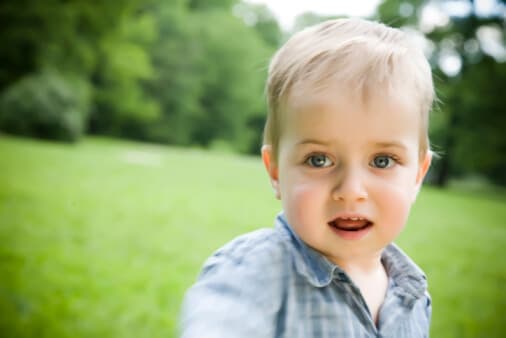Treatment for Tibial Torsion

Question
I have a son who is now 20 months old. He was diagnosed by our local pediatrician as having tibial torsion. It is extremely visible. We have taken him to a specialist in Syracuse, New York at the Syracuse University Medical Center. He took x-rays, and told us that the bone growth looked excellent, both at the hips and the knees, and that he wanted to see us again in six months to do more x-rays to watch the bone growth. We are concerned that there may be other opinions regarding the use of corrective devices, and don't want this window of opportunity to slip by, as we wait six months at a time.
Rodger Moran - Oneonta, New York
Dr. Greene's Answer
Many parents share the concern that their children’s feet don’t line up straight. The most common cause of in-toeing in toddlers is internal tibial torsion (the large bone in the calf is rotated inward). Tibial torsion is usually a result of normal positioning of the baby in the tight space of the uterus. Some degree of tibial torsion is normal throughout infancy.
When a child begins to pull to stand, and then to walk independently, tibial torsion usually begins to correct spontaneously. In most children this process is complete within 6 to 12 months after independent walking. Spontaneous correction can continue to occur for years after this. By mid-childhood, a small percentage of children will continue to have significant tibial torsion.
For many years, the standard treatment for internal tibial torsion was the Denis-Browne splint, an 8- to 12- inch bar, worn at night, with the feet facing out at about 45 degrees. This device seemed to work quite well — almost all of the children who wore one experienced slow, steady improvement and then disappearance of their severe tibial torsion. The device worked so well that it was taken on faith. No controlled studies were done. They were felt to be unnecessary.
In June 1991, Heinrich and Sharps published a prospective, randomized, controlled analysis of the Denis-Browne splint (Orthopedics). The splint did work very well. But doing nothing at all worked equally well. Almost all children corrected spontaneously with or without the splint.
Since 1991, many other splints have been designed to “treat” this condition, but no non-surgical treatment has been shown to be any more effective than doing nothing at all for young children with uncomplicated internal tibial torsion (Journal of the American Academy of Orthopaedic Surgeons, 11(5) 2003). Still, old habits die hard, and it is not difficult to find textbooks and doctors who recommend the use of some type of nighttime device. My favorite of these is the recommendation that the child sleep on the back, to let gravity pull the feet outward (face-down children usually point the toes in). This recommendation is inexpensive, non-invasive, and makes some intuitive sense. As far as I know, it has yet to be studied. Some people sew bulk to the front of the pajamas to make it uncomfortable to sleep on the tummy, but I wouldn’t go to this much trouble.
Indications to see a specialist sooner than later include worsening rotation, frequent tripping, pain with walking or difficulty wearing shoes. Otherwise, internal tibial torsion corrects in a majority of children by about age 4 without any need for intervention.
In a minority of children, the feet are still turned inward by more than 15 degrees at age five, spontaneous correction is unlikely. For these children, surgical derotation is an effective treatment. Typically, the best window for this is between 7 or 8 and 10 years of age.
Interestingly, a study published in the summer of 1996 in the Journal of Pediatric Orthopaedics contained good news for those whose internal tibial torsion doesn’t completely correct, but isn’t severe enough to indicate surgery. The fastest runners tend to fall in this category. Top sprinters, in particular, are significantly more likely to be in-toed than the general population.
Note: External tibial torsion is out-toeing caused by outward rotation of the large calf bone. It results from a normal variant position of the baby in the uterus. Like internal tibial torsion, external tibial torsion does not begin to correct until the baby begins to walk. In most cases correction is complete by age 2 or 3.


